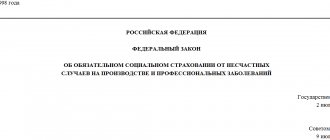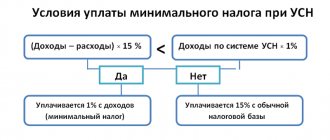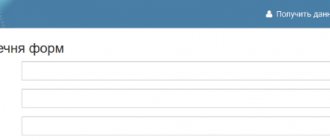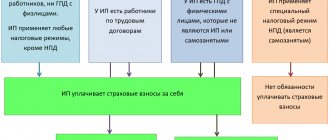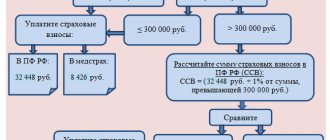From 01.08.2017, employers can purchase, through contributions to the Social Insurance Fund, workwear made from fabrics, knitwear or non-woven materials, the country of origin of which is Russia. Previously, other changes were made to the rules for financial support for preventive measures to reduce industrial injuries and occupational diseases of workers. The Federal Tax Service of the Russian Federation commented on some issues that taxpayers have in practice in a letter dated February 20, 2017 No. 02-09-11/16-05-3685.
Employers have the right to reduce calculated contributions “for injuries” (within certain limits) for the costs of preventing industrial accidents and occupational diseases.
The procedure for such a reduction is prescribed in the Rules for financial support of preventive measures to reduce industrial injuries and occupational diseases of workers and sanatorium and resort treatment of workers engaged in work with harmful and (or) hazardous production factors, approved. by order of the Ministry of Labor of Russia dated December 10, 2012 No. 580n (hereinafter referred to as Rules No. 580n).
In 2021, the Russian Ministry of Labor introduced a number of changes to the Rules, approved by orders dated April 29, 2016 No. 201n and dated July 14, 2016 No. 353n.
Note:
* For more information about the changes made to the Rules for financial support of preventive measures to reduce industrial injuries and occupational diseases of workers by Orders No. 201n and No. 353n, read the article “Contributions for injuries: what has changed.”
The legislative framework
The changes are due to the adoption of Federal Laws No. 243-FZ of July 3, 2016 and No. 250-FZ of July 3, 2016.
Thanks to the first of them (No. 243-FZ dated 07/03/2016), starting from the new year, chapter 34 “Insurance contributions” will appear in the Tax Code. It contains articles 419-432, which spell out new rules for the calculation and payment of contributions. The first part of the Tax Code has also been adjusted. The main essence of the amendments is that all the basic principles applied to taxes will also apply to insurance premiums from 2021.
The second Federal Law No. 250-FZ of July 3, 2016 introduces a number of amendments, thanks to which the transfer of functions for the administration of insurance premiums is transferred from the Pension Fund of the Russian Federation to the Federal Tax Service:
- Federal Law No. 212-FZ dated July 24, 2009 will cease to apply as of January 1, 2017;
- a new version of the Federal Law dated April 1, 1996 No. 27-FZ “On individual (personalized) accounting in the compulsory pension insurance system” will come into force;
- from 01/01/2017, a new version of the Federal Law of December 29, 2006 No. 255-FZ “On compulsory social insurance in case of temporary disability and in connection with maternity” will be in force;
- from the new year, a new version of the Federal Law of July 24, 1998 No. 125-FZ “On compulsory social insurance against industrial accidents and occupational diseases” will come into force.
Amounts of insurance rates and payments
From January 1, 2021, the previous rates of contributions for injuries continue to apply.
In 2021, as before, employers must pay contributions for injury at the rates in force since 2006.
Which tariff an organization should apply depends on the class of professional risk to which its main type of activity is classified, as well as on the assigned discounts and allowances.
Federal Law No. 419-FZ of December 19, 2016 establishes that the rates of contributions for injuries are determined as a percentage of the amounts of payments and other remunerations that are accrued in favor of the insured in accordance with Federal Law of July 24, 1998 No. 125-FZ.
The class of professional risk to which the main type of activity belongs is determined according to the Classification of Types of Economic Activities approved by Order of the Ministry of Labor of Russia dated December 30, 2016 N 851n. This order canceled Order of the Ministry of Labor dated December 25, 2012 N 625n, which previously determined the classification. For the first time, a type of activity is assigned to a company upon its registration with the Federal Social Insurance Fund of the Russian Federation.
Insurers-organizations must annually confirm the main type of economic activity, with the exception of the year in which the organization was created. The main type of activity is considered to be the one that, based on the results of the previous year, has the largest share in the total volume of products produced and services provided.
Individual policyholders do not need to do this. For them, the main type of activity is the one indicated in the Unified State Register of Entrepreneurs. But if an individual entrepreneur changes the type of activity and such changes are reflected in the Unified State Register of Individual Entrepreneurs, then from next year a different insurance rate will apply to him.
Attention!
From January 1, 2021, if the organization has not confirmed its main type of activity, the Social Insurance Fund determines the risk class according to the Unified State Register of Legal Entities.
The rules in force until 2021 provided for the following. If the main type of economic activity of the insured is not confirmed, contributions for injuries are calculated at the rate established for the most dangerous type of activity that is actually carried out. Inspectors often determined it according to the Unified State Register of Legal Entities, without finding out whether this activity was being carried out. The courts did not agree with their approach, but since 2021 it has been enshrined in the legal regulations. The changes are provided for by Decree of the Government of the Russian Federation dated June 17, 2016 N 551.
The Federal Insurance Service of the Russian Federation may assign a discount or premium to the insurance tariff according to the professional risk class. A discount reduces the tariff, a surcharge, accordingly, increases it. Discounts and allowances are assigned taking into account the state of labor protection and insurance costs. The maximum amount of both discount and surcharge cannot be more than 40% of the tariff.
The procedure for establishing discounts and surcharges on the insurance rate is regulated by the Rules, which are approved by Decree of the Government of the Russian Federation of May 30, 2012 No. 524. To receive such a discount, the policyholder must submit a corresponding application to the Social Insurance Fund.
Let us note the most important thing - the mandatory conditions for assigning a discount:
- Absence of a fatal insured event in the previous financial year that was not the fault of third parties.
- Conducting financial and economic activities for at least three years from the date of registration to the year in which the discount is calculated.
- Timely payment of current insurance premiums.
- No debt on contributions.
If all the requirements are met, then the Federal Social Insurance Fund of the Russian Federation will calculate the amount of the discount and, no later than December 1, will make a decision on its establishment for the next year.
Insurance payments
Insurance payments are amounts of money that, in accordance with the law, are paid to an employee injured as a result of an insured event. They must compensate for the harm caused to the employee’s health as a result of such an incident.
An insured event is damage to an employee’s health as a result of an industrial accident or occupational disease, confirmed in the prescribed manner.
Types of insurance payments:
- temporary disability benefits;
- one-time or monthly insurance payments;
- payment of additional expenses related to the medical, social and professional rehabilitation of the employee.
The amount of one-time and monthly payments depends on the degree of loss of professional ability by the insured person and is limited to the maximum amount.
The amount from which the size of the lump sum insurance payment for compulsory social insurance against industrial accidents and occupational diseases is calculated is:
- in 2021 - 94,018.0 rubles;
- in 2021 - 97,778.7 rubles;
- in 2021 - 101,689.8 rubles.
It has been established that the maximum monthly insurance payment cannot exceed:
- in 2021 - 72,290.4 rubles;
- in 2021 - 75,182.0 rubles;
- in 2021 - 78,189.3 rubles.
This is provided for by Federal Law No. 418-FZ of December 19, 2016 “On the budget of the Federal Compulsory Health Insurance Fund for 2021 and for the planning period of 2021 and 2021.”
Functions of the Pension Fund in relation to the administration of insurance premiums from January 1, 2021
From January 1, 2021, the Pension Fund of the Russian Federation in relation to insurance premiums will deal with the periods preceding 01/01/2017, namely:
- acceptance and processing of payments, including updated ones, for insurance premiums;
- carrying out inspections - desk and on-site, including repeated ones - and making decisions based on their results;
- making decisions on the return of overpaid or overcharged insurance premiums;
- writing off uncollectible amounts of arrears on insurance premiums, penalties and fines on grounds that arose before January 1, 2021;
- administration of mandatory insurance contributions paid by citizens for the insurance pension, as well as voluntary contributions for the funded part of the pension.
As before, the Pension Fund will accept for periods occurring after 01/01/2018:
- information about individual personalized accounting in the SZV-M form;
- information about the length of service of the insured persons;
- registers of insured persons for whom additional insurance contributions were transferred to the funded part of the pension (contributions were paid by the employer);
- copies of payment documents from citizens about the additional insurance contributions they paid for the funded part of the pension.
New rights and obligations of the insurer
Thanks to the innovations, the rights and responsibilities of the Social Insurance Fund have been expanded (clauses 8.1 - 8.9 clause 1, clauses 15 - 21 clause 2, article 18 of Federal Law No. 125-FZ are introduced).
| New rights of the FSS | New responsibilities of the FSS |
| Call policyholders on the basis of a written notice to provide explanations in connection with the payment of insurance premiums or verify the correctness of their payment if the information they provide is incomplete or contradictory. | Make decisions on the return of amounts of overpaid (collected) insurance premiums, penalties and fines, send appropriate orders to the territorial bodies of the Federal Treasury for execution and offset the amounts of overpaid (collected) contributions, penalties and fines |
| Determine the amount of insurance premiums for injuries by calculation based on the information available to the insurer about the policyholder | Send to the policyholder copies of the inspection report and the decision of the territorial body of the Social Insurance Fund, as well as the request for payment of arrears |
| Require insurers to eliminate identified violations of the law and monitor compliance with these requirements | Inform policyholders of information about the details of Federal Treasury accounts and their changes to fill out orders for the transfer of contributions |
| Collect arrears, as well as penalties and fines in the manner prescribed by law | Issue to the policyholder, upon his request, certificates about the status of his payments for insurance premiums, penalties and fines within five days from the date of receipt of the corresponding written request |
| Require from banks documents confirming the fact of debiting insurance premiums, penalties and fines from the policyholder’s accounts and transferring these amounts to the Social Insurance Fund budget | Carry out, at the request of the policyholder, a joint reconciliation of the amounts of paid insurance premiums, penalties and fines |
| Gain access to information constituting bank secrecy, to the extent necessary to monitor the fulfillment of established responsibilities by banks (other credit institutions) and policyholders | Issue, at the request of the policyholder, copies of decisions taken by the Social Insurance Fund regarding its decisions |
| File claims in courts of general jurisdiction or arbitration courts for the collection of arrears, penalties and fines | Accept calculations for accrued and paid insurance premiums and relevant supporting documents |
| Contact the authorized body with an application to declare the policyholder insolvent (bankrupt) due to his failure to fulfill his obligation to pay insurance premiums for injuries | |
| Receive information from the Unified State Register of Legal Entities and Unified State Register of Individual Entrepreneurs, as well as from tax authorities, information about taxpayers, including information constituting tax secrets |
In addition, legislators have limited access to information about the policyholder received by the Social Insurance Fund (Article 18.2 of Federal Law No. 125-FZ is being introduced). Thus, limited access information that is not subject to disclosure by the department and its officials includes any information received by the FSS about the policyholder. They must have a special storage regime. Officials, a list of whom is established by the FSS, have access to this information.
Disclosure of information includes, in particular, the use or transfer to another person of an official or commercial secret of the policyholder that has become known to an official of the territorial body of the Social Insurance Fund. But there are exceptions to the established rule. Thus, restricted access information does not include the following information:
- disclosed by the policyholder independently or with his consent;
- on violations of the legislation of the Russian Federation on compulsory social insurance against accidents at work and occupational diseases and measures of liability for these violations;
- provided to authorized bodies of other states in accordance with international treaties (one of the parties to which is the Russian Federation) on mutual cooperation in the field of compulsory social insurance (in terms of information provided to these bodies).
Deadlines for filing reports from 01/01/2017
Form RSV-1 for 2021 in paper form should be submitted to the Pension Fund of the Russian Federation before February 15, 2021 (Clause 3 of Article 431 of the Tax Code of the Russian Federation). It must be submitted electronically by February 20, 2021. Contributions are also paid in rubles and kopecks.
Starting next year, the deadline for submitting the SZV-M form will change. From 01/01/2017 it must be submitted by the 15th day of the month following the reporting month. If the specified date falls on a non-working day or a weekend, then the deadline is moved to the next working day.
READ ON THE TOPIC:
There will be no increase in insurance premiums in 2021.
Data on the length of service of insured persons for the past year are submitted to the Pension Fund by March 1 of the next year.
The report form has not yet been approved - for the first time it will need to be submitted to the Federal Tax Service at the beginning of 2021. Registers of insured persons for whom additional insurance contributions were transferred to the funded part of the pension (employer contributions were paid) are provided to the Pension Fund of the Russian Federation within 20 days from the end of the next quarter .
Copies of payment documents confirming the fact that citizens have paid additional insurance contributions for the funded part of the pension for the past quarter are provided by participants in the state pension co-financing program themselves no later than 20 days from the end of the reporting period.
For periods after 01/01/2017, quarterly calculations will need to be submitted to the Federal Tax Service, which will replace the forms RSV-1, RSV-2, RV-3 and 4-FSS. The deadline for submitting this form is no later than the 30th day of the month following the billing or reporting period (clause 7 of Article 431 of the Tax Code of the Russian Federation).
It is necessary to ensure that the total amount of pension contributions is exactly equal to the amount of contributions for each individual insured person. If there are discrepancies, the calculation will not be considered accepted.
Reporting on contributions “for injuries” to the Social Insurance Fund (SIF) will still be provided until the 20th day of the month following the reporting month if the document is sent on paper, and before the 25th day if in electronic form.
For all types of reporting with an average headcount of more than 25 people - both for legal entities and individual entrepreneurs - documents are provided electronically via telecommunication channels. Other payers will be able to report on paper (Clause 10, Article 431 of the Tax Code of the Russian Federation).
Payment procedure
Contributions must be made monthly. Payments are made after salary accrual. Let's consider the calculation procedure:
- Summarization of payments. To carry out calculations, the following payments are added up: wages, bonuses, vacation pay, travel allowances.
- Determination of the injury base. From the amount received, you must subtract payments for which contributions are not calculated. These payments are prescribed in Article 20.2 of the Law.
- Setting the tariff. If the company confirms the main direction of its work every year, the required percentage can be found in the notice from the Social Insurance Fund. If the main activity is not confirmed, the percentage should be sought according to OKVED. It is indicated in the registration papers from social insurance.
- Determination of the contribution amount. The found base is multiplied by the tariff.
The amount received is sent to the fund. Calculations are carried out on the basis of official documents.
Calculation example
Let's look at an example. The accountant is faced with the task of calculating injury payments for May 2021. The company makes the following payments to employees:
- Salary – 1,542,120 rubles.
- Remuneration for length of service – 125,470 rubles.
- Business trips – 3,520 rubles.
- Maternity benefit – 284,250 rubles.
- The bonus for the quarter is 617,800 rubles.
- Vacation compensation – 58,730 rubles.
You need to add up all these indicators and then subtract those payments that are not taxed: 2,542,120 + 125,470 + 3,520 – 284,250 + 617,800 – 58,730 = 1,945,930 rubles. The organization's OKVED code is 10.52. This is risk class 3. The contribution rate is 0.4%. You need to multiply the resulting amount by the tariff. The result is 7,783.72. This is the amount that needs to be sent to the Social Insurance Fund.
Changing payment details
Since the administration of insurance premiums has been transferred to the Federal Tax Service, payments from January 2021 should be sent through the Treasury to the account of the local tax service, i.e. The details of the payee will change in payment documents:
- the values of the TIN and KPP of the territorial tax authority on whose account the payer is registered are indicated;
- when filling out the “Recipient” field, write the abbreviated name of the Federal Treasury, and next to it in parentheses - the abbreviated name of the corresponding tax authority;
- in the KBK, when paying contributions, the first three digits must be “182”, which corresponds to the Federal Tax Service. When filling out the payment order details (104), indicating the BCC, you must especially carefully enter the codes of the subtypes of income, because these will vary depending on the period for which the payment is made.
Contribution payers have the right to pay insurance premiums for December 2021 ahead of schedule, i.e. until December 31, 2016. Then payments must be sent to the Pension Fund, Social Insurance Fund, and Federal Compulsory Medical Insurance Fund, respectively. They will also act as recipients of payments if the arrears are paid during the specified period. The payment documents indicate the “old” KBK.
Contributions “for injuries” will also be collected by the Social Insurance Fund, i.e. its BCC will remain unchanged.
How to pay
To pay for insurance coverage, use a special payment document - a payment order. This document has a unified form OKUD 0401060. The form is approved by Bank of Russia Regulation No. 383-P dated June 19, 2012.
The recipient of the contribution is the territorial branch of Social Insurance in which the subject is registered. The payment order must indicate the treasury details of the FSS branch, namely:
- full name;
- TIN;
- checkpoint;
- checking account;
- BIC and information about the bank.
| Payment | KKB for injuries for employees |
| Contributions | 393 1 0200 160 |
| Fines | 393 1 0200 160 |
| Penalty | 393 1 0200 160 |
Sample payment order
Registration
From 01/01/2017, payers of insurance premiums will be registered (deregistered) with the tax authorities at the location of the organization, the location of its separate divisions, for a foreign non-profit non-governmental organization - at the place of its activities in the territory of the Russian Federation through a branch, as well as an individual entrepreneur at his place of residence.
READ ON THE TOPIC:
Self-employed people providing services to other citizens will be exempt from compulsory health insurance premiums.
Registration of an international organization will be carried out on the basis of a corresponding application from authorized persons.
Registration (deregistration) of a patent attorney is carried out at his place of residence on the basis of information reported by the Federal Service for Intellectual Property.
The registration of an arbitration manager, appraiser, mediator will be made on the basis of information provided by the authorized federal executive body exercising functions of control (supervision) over the activities of self-regulatory organizations of arbitration managers, appraisers, mediators at their place of residence.
Registration (deregistration) of an individual is carried out at his place of residence on the basis of an application submitted to any tax authority of his choice.
Payers
Payers of insurance premiums are (Article 419 of the Tax Code of the Russian Federation):
1. payers making payments and providing other benefits to individuals:
- organizations;
- individual entrepreneurs;
- individuals who are not individual entrepreneurs;
2. payers who do not make payments and other remuneration to individuals:
- individual entrepreneurs;
- lawyers;
- notaries engaged in private practice;
- arbitration managers;
- appraisers;
- mediators;
- patent attorneys;
- other persons engaged in private practice in accordance with the procedure established by law.
If the payer can be simultaneously classified into several categories, he should calculate and make contributions separately for each basis. For example, for yourself as an individual entrepreneur, and as an employer for your employees.
Responsibilities of insurance premium payers
Payers of insurance premiums are obliged (clause 3.4 of Article 23 of the Tax Code of the Russian Federation):
- pay insurance premiums in accordance with the Tax Code of the Russian Federation;
- keep records of objects subject to insurance premiums, the amounts of calculated insurance premiums for each individual in whose favor payments and other remuneration were made;
- submit calculations of insurance premiums to the Federal Tax Service at the place of registration;
- submit to the Federal Tax Service the documents necessary for the calculation and payment of insurance premiums;
- submit to the Federal Tax Service information about insured persons in the individual (personalized) accounting system;
- keep documents necessary for calculating and paying insurance premiums for 6 years;
- inform the tax authority at the location of the Russian organization that pays insurance premiums about vesting a separate division with the authority to charge payments and rewards in favor of individuals within 1 month from the date of vesting it with the corresponding powers.
Relationships with a credit institution
Relations between the insurer and the bank will now be regulated by Art. 22.2 of Federal Law N 125-FZ (clauses 1.1 - 1.4 were added). So, if the policyholder decides to open (close) an account or change its details, the bank will notify the territorial body of the Social Insurance Fund at its location within five days from the date of the corresponding event. The policyholder's order is executed by the bank within one business day following the day of receipt of such order. In this case, no service fee is charged for these operations. If there are funds in the policyholder's account, the bank has no right to delay the execution of the policyholder's instructions and the insurer's instructions.
Taxable object and taxable base
The rules that must be followed when determining pension, medical contributions, as well as contributions to the Social Insurance Fund (excluding contributions for injuries) have remained almost unchanged.
READ ON THE TOPIC:
List of professions falling under the bill on exempting self-employed citizens from paying tax in 2021.
Payments and other remuneration to individuals accrued under employment and civil law contracts are still considered a taxable object.
Its value is determined separately for each insured person on an accrual basis from the beginning of the year. The concept of the maximum value of the base for contributions in case of temporary disability and in connection with maternity remains unchanged. However, the size of the limit is indexed annually. For pension contributions, a reduced rate will remain for payments calculated in excess of the limit. The amounts of all tariffs and benefits will remain the same.
Important: the amount of “daily allowance” exempt from these contributions will change (clause 2 of Article 422 of the Tax Code of the Russian Federation). From 01/01/2017, these payments will not be charged only for 700 rubles per day for business trips within Russian territory and no more than 2,500 rubles for foreign business trips.
The methodology for determining the amount of the taxable base in relation to income received in kind will also change: from next year, the provisions of Art. 105.3 of the Tax Code of the Russian Federation, that is, based on market prices including VAT.
When determining the amount of contributions “for injuries”, daily allowances are completely exempted, and income in kind is taken into account according to contract prices.
Reporting on deductions for injuries in 2020-2021
Reporting on injuries in 2020-2021 remains submitted quarterly in the month following the end of the next quarter, no later than (Clause 1, Article 24 of Law No. 125-FZ):
- on the 20th, if the report is generated on paper (insured persons with an average number of no more than 25 people have this right);
- On the 25th, if delivery is made electronically.
To compile it, form 4-FSS is used, approved by Order of the FSS of the Russian Federation dated September 26, 2016 No. 381 in its current version. The same document contains rules for reporting. Data is entered into the form as a total that increases from quarter to quarter. Only those tables for which the necessary data are available must be filled out.
Read about what has changed in the 4-FSS form in its latest update in the material “Form 4-FSS for the year - reporting form and example of filling out.”
Along with Form 4-FSS, another report is submitted - on the use of insurance funds to implement measures to reduce injuries at work.
In 2021, this report is submitted using a new form. You can view the sample and comments on how to fill it out in ConsultantPlus. Trial access to the legal system is free.
The legality of applying a certain tariff when calculating contributions requires annual confirmation of the type of activity being carried out. The deadline for confirmation is defined as April 15 of the year following the one for which the information substantiating the type of activity is generated (clause 3 of the confirmation procedure approved by order of the Ministry of Health and Social Development of Russia dated January 31, 2006 No. 55). In 2021, due to the coronavirus, the confirmation deadline has been postponed to May 12.
For information about what documents are submitted to the Social Insurance Fund in this regard, read the material “Application for confirmation of the main type of activity.”
Reimbursement of social insurance expenses
In 2021, the employer will retain the right to reimburse the costs of paying benefits from the Social Insurance Fund. The exception is the first three days on “non-maternity leave” sick leave. Organizations and individual entrepreneurs have the right to transfer due contributions reduced by the amount of accrued benefits. If the result is negative, then in the next period, when determining the amount of transfers to the Social Insurance Fund, they can be reduced by the balance of the fund’s “debt”.
The correctness of the calculation of benefits will be checked according to the following scheme:
- Having received a single quarterly calculation, the Federal Tax Service will transfer the necessary information to the Social Insurance Fund;
- The Social Insurance Fund will verify the correctness of the calculations as a result of a desk or on-site audit;
- the report will be sent to the Federal Tax Service;
- if the inspection reveals problems, the Federal Tax Service will send the policyholder a demand for payment of the missing contributions. If the report is found satisfactory, then there will be either an offset of payments or, if necessary, a refund.
The described scheme will be valid until December 31, 2018 only in those regions where the scheme for paying contributions directly to the Social Insurance Fund is not yet in effect. From January 1, 2019, the reimbursement procedure will be abolished, and all regions will receive benefits directly from social insurance.
How much to transfer
CONTRIBUTIONS = B x TARIFFB = Payments/gpd – Payments/o
Payments/gpd – funds paid to an individual in accordance with an employment (civil) contract.
Payments/o – non-contributory payments.
EXAMPLE
The travel agency "Prestige" offers vacationers excursion tickets, as well as places to stay and vehicles. OKVED – 63.30.2. In February 2021, employees received a salary in the total amount of 3 million 500 thousand rubles, including financial assistance of 32 thousand rubles. Determine the amount of insurance contributions to the Social Insurance Fund.
Solution
- Let's calculate the base for calculating contributions:
B = 30 = 3,468,000 rub.
- According to the Classification of Activities by Risk, the travel agency "Prestige" is classified in class I of professional risk, which corresponds to a tariff of 0.2%. As a result, deductions for injuries are equal to:
CONTRIBUTIONS = 3,468,000 x 0.2 = 6936 rubles.
The Social Insurance Fund makes allowances or discounts for some enterprises. Therefore, the amount of final contributions may be further increased or decreased.
Sanctions
In 2021, the practice of imposing sanctions against policyholders continues, but they will be assigned and implemented by the Federal Tax Service on the basis of reports submitted by the Pension Fund.
READ ON THE TOPIC:
How the tax system will change in 2021.
Important amendments to the legislation Violations in the payment of insurance premiums are now equated to violations in the payment of taxes, respectively, and will be punished for them on the same grounds.
So, for failure to submit a calculation of contributions, you will be fined on the basis of Art. 119 of the Tax Code of the Russian Federation, and for gross violation of the rules for accounting the base for contributions - under Art. 120 Tax Code of the Russian Federation. Violations in the payment of contributions “for injuries” will also remain under the jurisdiction of the FSS, and possible types of sanctions in this area are given in Federal Law No. 125-FZ of July 24, 1998.
The Pension Fund of Russia will be able to operate with two types of sanctions: for failure to provide annual information about the length of service (500 rubles in relation to each insured person), and for violation of the procedure for submitting reports in the form of electronic documents (1,000 rubles) (Article 17 of the Federal Law No. 27-FZ dated 04/01/1996).
According to paragraph 11 of Art. 76 of the Tax Code of the Russian Federation, the rules for blocking accounts also apply to payers of insurance premiums. But in paragraph 3 of this article, where legislators listed all the permissible grounds for blocking, payment of contributions not submitted on time is not listed, i.e. Until this point is clarified, disputes may be resolved, including in court.
Contribution rates for 2021
Premium rates for 2021 remain the same as they were in 2021. They depend on the occupational risk class. Let's take a closer look at the bet size:
- Risk class 1 – the insurance rate will be 0.2%.
- Class 2 – 0.3%
- Class 3 – 0.4%.
- Class 4 – 0.5%.
- Class 5 – 0.6%.
- Class 6 – 0.7%.
- Next, 1 is added to both the class and the rate (class 7 - 0.8% and so on).
- Class 15 – 1.7%.
- Class 16 – 1.9%.
- Next, 2 is added to both the bet and the class.
- Class 20 – 2.8%.
- Class 21 – 3.1%.
- Next, 3 is added to both the class and the rate.
- Class 23 – 3.7%.
- Class 24 – 4.1%.
- Class 25 – 4.5%.
- Class 26 – 5%.
- Class 27 – 5.5%.
- Class 28 – 6.1%.
- Class 29 – 6.7%.
- Class 30 – 7.4%.
- Class 31 – 8.1%.
- Class 32 – 8.5%.
As is obvious, the rate varies from 0.2% to 8%. The higher the risk of injury, the more expensive insurance premiums are for the employer. The existing 32 tariffs are established by Federal Law No. 179 of December 22, 2005. The risk class can be determined based on OKVED or the classifier established by Order of the Ministry of Labor No. 851.
To find a rate, you must first confirm your OKVED ID. For this purpose, it is necessary to send a number of documents to the FSS by April 17:
- A statement confirming the main activity of the company.
- Certificate certificate.
- Explanatory note for the previous year.
What happens if you don’t contact the FSS? No fines are assessed, but in this case the rate is set by FSS employees. All areas of the organization’s activities are registered in the Unified State Register of Legal Entities. The most dangerous activity is selected from the list under consideration. It is on this basis that the tariff is selected. This is not the most profitable option for the organization, and therefore it is recommended to timely confirm the main direction of activity according to OKVED.
IMPORTANT! If the FSS has established a tariff independently, the company does not have the right to challenge it. This rule was approved by Resolution No. 551 of June 17, 2021.
Specifics of payment of contributions by separate divisions
Currently, separate divisions pay contributions and provide reporting at their location only when they have their own current accounts and separate balance sheets.
READ ON THE TOPIC:
Salary insurance premiums may increase
From 01/01/2017, the requirement to have an account and balance will be abolished.
This means that separate divisions located in Russia and calculating remuneration and other payments in favor of individuals will have to transfer contributions (except for contributions “for injuries”) and submit calculations at the place of their registration (clause 11 of Article 431 of the Tax Code of the Russian Federation). Starting next year, policyholders who began making payments to individuals in 2021 and later will be required to report to the Federal Tax Service at the location of the parent organization that the Russian division has the authority to accrue payments and rewards to individuals (clause 7, clause 3.4, article 23 of the Tax Code RF).
There were no changes regarding the payment of “injury” contributions for separate units.
About the date of manufacture and expiration date of PPE
There is currently a requirement that data on the date of manufacture and expiration date of the PPE is required to support the cost of purchasing personal protective equipment. Amendments were made to subparagraph “d” of paragraph 4 of the Rules by Order No. 353n.
The FSS emphasized that for this there is enough information directly on the product itself, i.e. on the tag, label, packaging. Moreover, information about the shelf life (after which PPE cannot be used) or service life is equated to information about the shelf life.
If the product does not have such data, then the employer should request it from the supplier (when shipping the goods from its warehouse).
For self-employed citizens
Anyone who works for themselves will also pay fixed fees for health insurance. Contributions in case of temporary disability and in connection with maternity remain voluntary. They do not need to pay “injury” contributions.
When paying pension contributions, the only change is provided: everyone whose income exceeds 300,000 rubles will be required to pay 1% of the amount exceeding the specified contribution in excess of the fixed contribution amount.
Data on income will be received by the Federal Tax Service from tax returns. But the rule according to which contributions in the maximum amount are charged if a declaration is not submitted will be abolished.
Entrepreneurs and other “individuals” were not burdened with the obligation to submit calculations for fixed contributions. But the heads of peasant (farm) households will have to submit calculations no later than January 30 of the year following the billing period.
This might also be useful:
- Deadline for submitting 2-NDFL in 2021 for 2021
- How to calculate the simplified tax system?
- How to register as a UTII payer
- Payment of 1% on income over 300,000 rubles
- Fixed payments for individual entrepreneurs on UTII in 2021
- Fixed payments for individual entrepreneurs in 2021 for themselves
Is the information useful? Tell your friends and colleagues
Dear readers! The materials on the TBis.ru website are devoted to typical ways to resolve tax and legal issues, but each case is unique.
If you want to find out how to solve your specific issue, please contact the online consultant form. It's fast and free!
